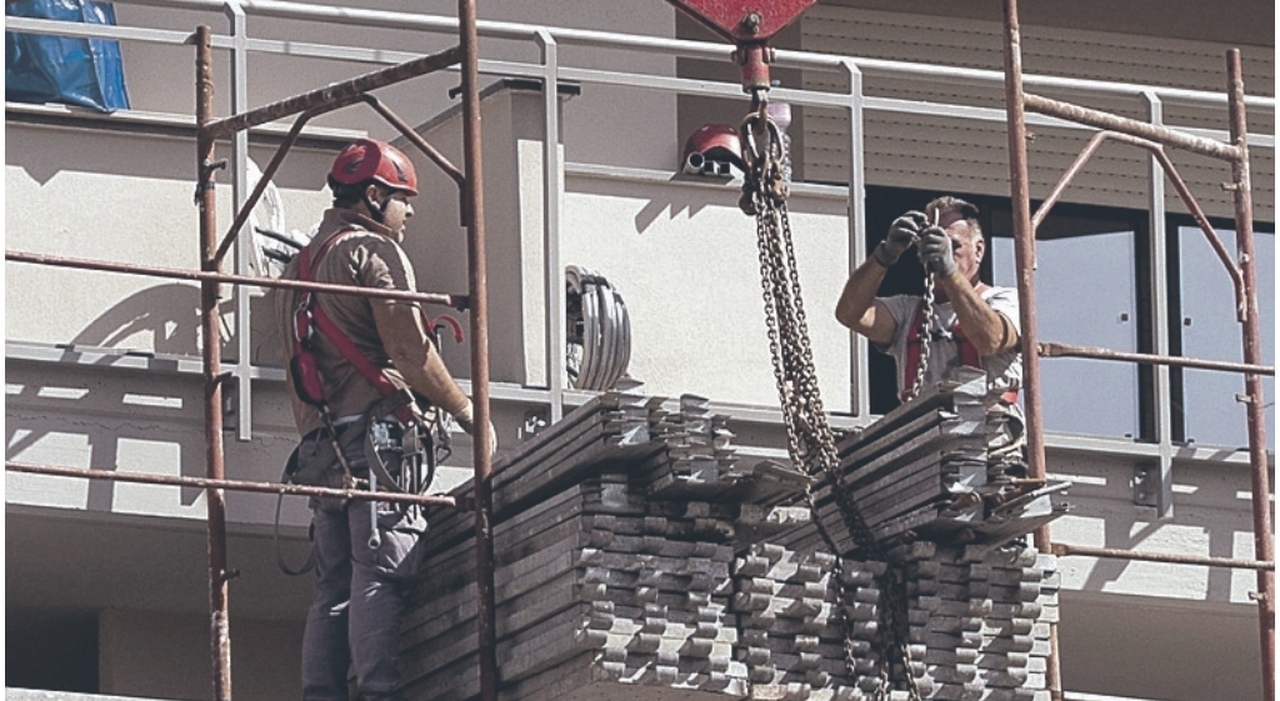From the window not drawn on the plan but present for decades on the facade of the building up to the partition with a different location from the original project. And again:… Already a subscriber? Log in here!
SPECIAL OFFER
BEST OFFER
ANNUAL
79,99€
19€
For 1 year
CHOOSE NOW
MONTHLY
6,99€
€1 PER MONTH
For 6 months
CHOOSE NOW
SPECIAL OFFER
SPECIAL OFFER
MONTHLY
6,99€
€1 PER MONTH
For 6 months
CHOOSE NOW
– or –
Subscribe to the subscription by paying with Google
Subscribe
SPECIAL OFFER
Read the article and the entire website ilmessaggero.it
1 Year for €9.99 €89.99
Subscribe with Google
or
€1 per month for 6 months
Automatic Renewal. Deactivate whenever you want.
Unlimited access to articles on the site and app The 7.30am Good Morning newsletter The 6pm newsletter for the day’s updates Podcasts from our signatures Insights and live updates
From the window not drawn on the plan but present for decades on the facade of the building up to the partition with a different location from the original project. And again: the niche to insert the bathtub or the mezzanine to create the children’s room. Up to the small portions of properties (a small terrace, a mini veranda) not present in the documents filed with the Municipalities but compliant with previous urban planning legislation. All interventions that can be remedied with the building peace being studied by the Ministry of Infrastructure led by Matteo Salvini. A text which, at least in the intentions of the deputy prime minister, aims to clarify, remedying small irregularities within homes and abolishing “double conformity”. A critical issue that effectively freezes sales. Today, to heal elements created without permits or in conflict with current permits, it is necessary for these elements to comply both with the rules of the time in which they were physically created and with the rules of the time in which the amnesty is requested. This double requirement creates a significant obstacle and slows down thousands of practices, imprisoned in uncoordinated, often overlapping and certainly chaotic legal disciplines. No total amnesty therefore, nor the possibility of going against the rules that protect assets subject to constraints in the text of the legislative decree under construction, but only rules that simplify the picture.
Building amnesty: can verandas, attics, partitions and roofs be remedied? The crux of building discrepancies
THE PURPOSE
It is not easy at the moment to make an overall assessment of the measures given that the decree law is still on the table of the MIT, but certainly the new measures, when and if they are launched, will bring new resources to the Municipalities and will obviously be costly for the owners who intend get in order. There are no official estimates but given that to remedy a small abuse an average of 500 euros are needed, without counting the costs of paying the technicians, multiplying the “slight building defects” by 80% of the real estate involved, we arrive at a figure that fluctuates between 8 and 10 billion. Everything will depend on how the rules are written and the scope affected by the amnesty.
THE LINES
The ministry’s technicians work on three types of minor discrepancies: the legitimate state, construction tolerances and, as mentioned, double conformity. With the aim of eliminating the interpretative uncertainties of the current regulations and remedying the “slight modifications” (i.e. the partitions, mezzanines, windows). Differences that could have been remedied at the time the intervention was carried out, but cannot be remedied today due to the “double conformity” regulation. New rules also to allow changes in the intended use of properties between homogeneous categories. At the moment there are four categories: residential (with the tourist-accommodation sub-category), productive and office, commercial and agricultural. The change will be possible – we read in a MIT slide – respecting the rules for each type. The change between different functional categories must respect not only the requirements for each individual typology, but also those of the territorial plan. If the housing unit involved is located in a condominium (an office to be transformed into a home), the operation must not violate the condominium regulations.
Among the upcoming measures there is also the possibility of regularizing the very frequent case of those who buy a house on the basis of a floor plan which does not correspond to the actual state of the organization of the internal spaces.
According to the ministry, the amnesty would allow millions of citizens to return to selling and renting homes. At the same time, the work of the municipal technical offices would be lightened.
© ALL RIGHTS RESERVED
Read the full article at
The messenger
